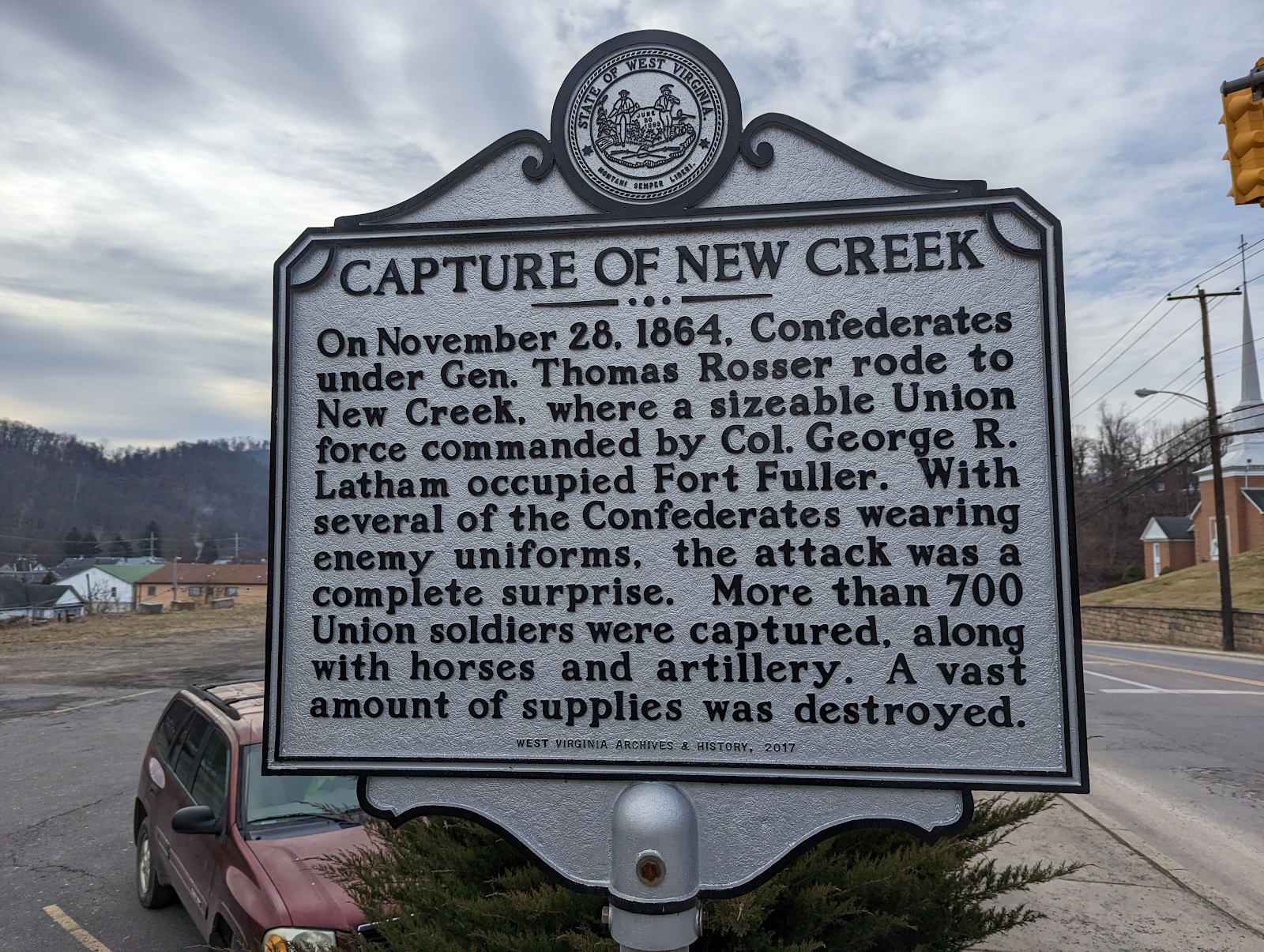May 5, 1861 - Protecting the Thomas Viaduct and B&O; Camp Essex; Camp Carroll
May 5, 1861
Baltimore, MD
Thomas Viaduct and Camp Essex
8th NY and 6th MA Infantry, Cook's Boston battery of light artillery
- Protecting the only rail link to DC from the North; "several other army regiments and batteries later occupied fortifications on both sides of the river, where they remained until the end of the war"
 |
| Please ignore the mysterious and undocumented second marker. But here's that viaduct today |
Might as well talk about the Patapsco Guard and the railroad now, if not May 5th, then certainly Spring of 1861
 |
| https://www.hmdb.org/m.asp?m=144727 |
B&O Railroad Station
Keep Supplies Moving
When the Civil War began, the Baltimore & Ohio Railroad became a vital transportation route for the Federal armies, with men and supplies passing by this station day and night. To protect the line, local businessman Thomas McGowan raised the Patapsco Guard and served as its captain. After the battles of Antietam and Gettysburg, Confederate prisoners of war were held here pending either parole or transfer to prison camps. The war's human toll was vividly evident here after the Union defeat at the Battle of Monocacy on July 9, 1864, near Frederick. Thousands of Federal soldiers and casualties, as well as more Confederate prisoners, flowed through town along the rail line as they withdrew to Baltimore.
[Sidebars:]
One of the first railroads in the country, built of wooden rails carrying horse-drawn carts, extended from Baltimore to Ellicott City. Regular passenger service began on May 24, 1830. The first successful American steam locomotive, Peter Cooper's Tom Thumb, famously raced a horse-drawn carriage running alongside the track near Ellicott's Mills on August 28. Tom Thumb was winning at a top speed of 10-15 miles per hour, until a belt broke and the locomotive lost steam. This station, the nation's oldest, was built in 1831. Iron rails soon replaced the wooden ones, and the track became part of the Baltimore & Ohio Railroad.
Local businessman Thomas McGowan recruited the Patapsco Guards in September 1861 and served as its captain. The unit assumed provost marshal duties in Ellicott's Mills until 1862, and then were assigned to the 3rd Maryland Infantry and marched to Harpers Ferry, where they skirmished with Confederate forces. On June 3, the Guard refused to cross into Virginia on the ground that the unit was a home guard raised to defend Maryland, not to invade the South. Several members were dishonorably discharged as deserters. In 1863, the Guard fought in a small action at Wrightsville, Pennsylvania, and then reported to Gettysburg after the battle to assist in guarding hospitals there. In August 1865, the guard was mustered out of service."
Eight different versions of this marker in the database, but none of them say "During the Civil War, Howard County...." like this one does. I'm not even playing.
 |
| No caption |
Also relevant:
 |
| https://www.hmdb.org/m.asp?m=220062 |
Camp Carroll
From Summer Home to Federal Camp
Charles Carroll, whose father of the same name was a signer of the Declaration of Independence, constructed the summer home, Mount Clare, that you see before you. The Carroll family could not have imagined that their peaceful fields would play a part in a war devastating the country the elder Carroll helped found.
In April 1861, in the first bloodshed of the Civil War, a crowd of Confederate sympathizers in Baltimore attacked the 6th Massachusetts Infantry as it passed through the city en route to Washington. By summer, the U.S. Army had established camps throughout Baltimore. Gen. John Reese Kenly of the Maryland militia opened a recruiting office and a month later took command of the 1st Maryland Infantry as colonel. He converted the pastures to the west of Mont Clare, then a hotel, into a training facility named Camp Carroll.
On March 22, 1862, the U.S. Army created the Middle Department in Baltimore to protect rail and communication lines. Gen. James Cooper's brigade, organized in April, included troops stationed here at Camp Carroll near the Baltimore and Ohio Railroad line. The brigade was disbanded on May 25, 1862.
Officers may have been quartered in Mount Clare, which offered an outstanding view of the camp. In the fall of 1862, Camp Carroll was renamed Camp Chesebrough, honoring Col. William G. Chesebrough, 11th U.S. Infantry. In 1864, the name reverted to Camp Carroll. The camp remained in use by Federal forces until the war ended.
[Sidebar:]
Units Trained at Camp Carroll
1861
1st Maryland Infantry • 13th New York Infantry • 4th Wisconsin Infantry • 8th Pennsylvania Infantry • 4th Maryland Infantry • 22nd Pennsylvania Infantry • Boston Light Artillery • Massachusetts Light Artillery • 17th Massachusetts Infantry • 2nd Maryland Infantry • 1st Pennsylvania Infantry • 7th New York Infantry















Comments
Post a Comment